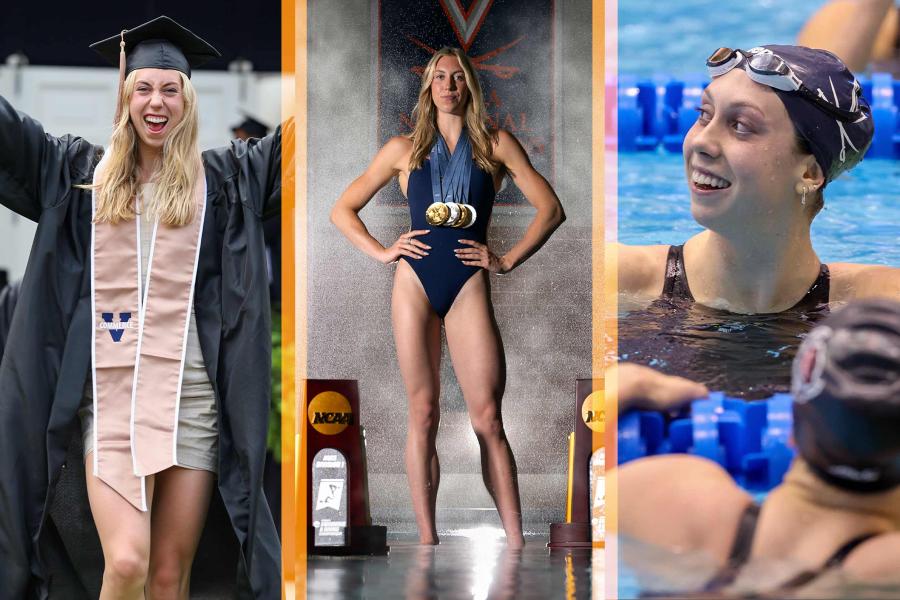
At the Centerof it all
Written By Jane Kelly / Art By Tobias Wilbur / Video By Vinny Varsalona / Photos By Sanjay Suchak
If you gaze up, you can see eternity. The center draws your eye.
Almost involuntarily, your view expands outward in every direction at once, eyes following the spokes that stretch to places still unimagined.
It is the oculus. The glass eye at the top of the dome. The pinnacle of the Rotunda, a barrel-centered building that is the heart of the University of Virginia.
The ceiling of the Rotunda’s Dome Room, a scaffold of anticlines pulling up and – through the oculus – spiriting outward, seemingly draws students upward, from one floor to the next, as they ascend from first-year students to doctoral scholars. Day in and day out, people are learning in the architectural marvel – a UNESCO World Heritage site – and contributing to the world’s book of knowledge.
Over the decades, the layout and role of the Rotunda have evolved but its centrality to the University has never changed.
Today, UVA students at every level of education – much like the levels of the Rotunda – are living, learning and contributing to society in meaningful ways.













